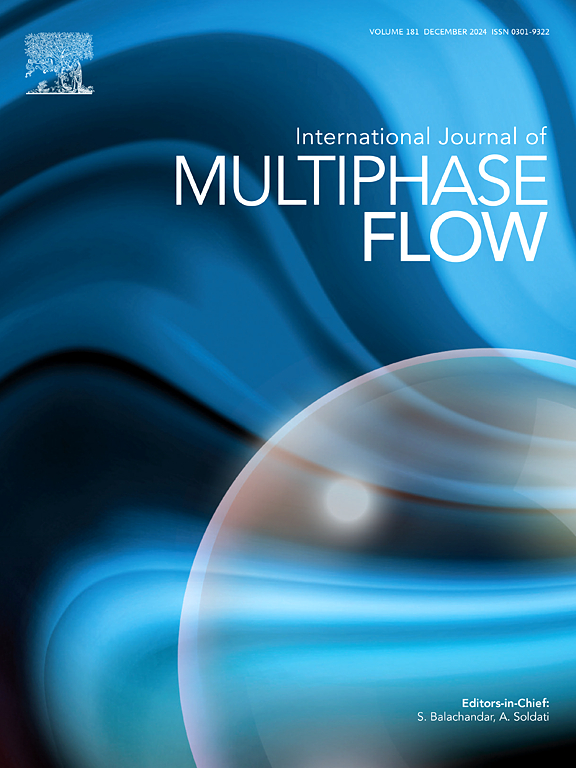Synchronized visualization and thermal measurements of flow boiling in high-aspect-ratio microchannel with backflow controller
IF 3.6
2区 工程技术
Q1 MECHANICS
International Journal of Multiphase Flow
Pub Date : 2025-01-15
DOI:10.1016/j.ijmultiphaseflow.2025.105140
引用次数: 0
Abstract
Microchannel flow boiling technology faces significant challenges due to the limited understanding of heat transfer mechanisms during various boiling regimes and lack of transient heat transfer analysis in literature. This study introduces a backflow control mechanism positioned before the inlet of a microchannel test section to suppress flow boiling instability. The aim is to elucidate the effect of the backflow control mechanism on flow boiling heat transfer by synchronizing high-speed flow visualizations with transient temperature data. Experiments are conducted on a microchannel heat sink (MCHS) with forty-four parallel microchannels, each having a hydraulic diameter of 315 µm. The flow visualizations capture vapor belts, vapor cluster slugs, nucleate and bubbly flow boiling regimes, rewetting phenomena, and their temporal durations within the MCHS. Surface temperature measurements of the MCHS and fluid inlet and outlet temperatures are used to calculate the heat transfer coefficient. Significant alterations in hydrodynamics, including the duration of dominant flow boiling regimes and rewetting periods, are observed when the backflow controller is employed. While high-frequency transient heat transfer coefficient peaks are typical in conventional microchannel flow boiling systems, the use of a backflow controller reduces the amplitude of these peaks and prolongs their duration. The analysis demonstrates the backflow controller's effectiveness in mitigating oscillations and enhancing heat transfer.

求助全文
约1分钟内获得全文
求助全文
来源期刊
CiteScore
7.30
自引率
10.50%
发文量
244
审稿时长
4 months
期刊介绍:
The International Journal of Multiphase Flow publishes analytical, numerical and experimental articles of lasting interest. The scope of the journal includes all aspects of mass, momentum and energy exchange phenomena among different phases such as occur in disperse flows, gas–liquid and liquid–liquid flows, flows in porous media, boiling, granular flows and others.
The journal publishes full papers, brief communications and conference announcements.

 求助内容:
求助内容: 应助结果提醒方式:
应助结果提醒方式:


